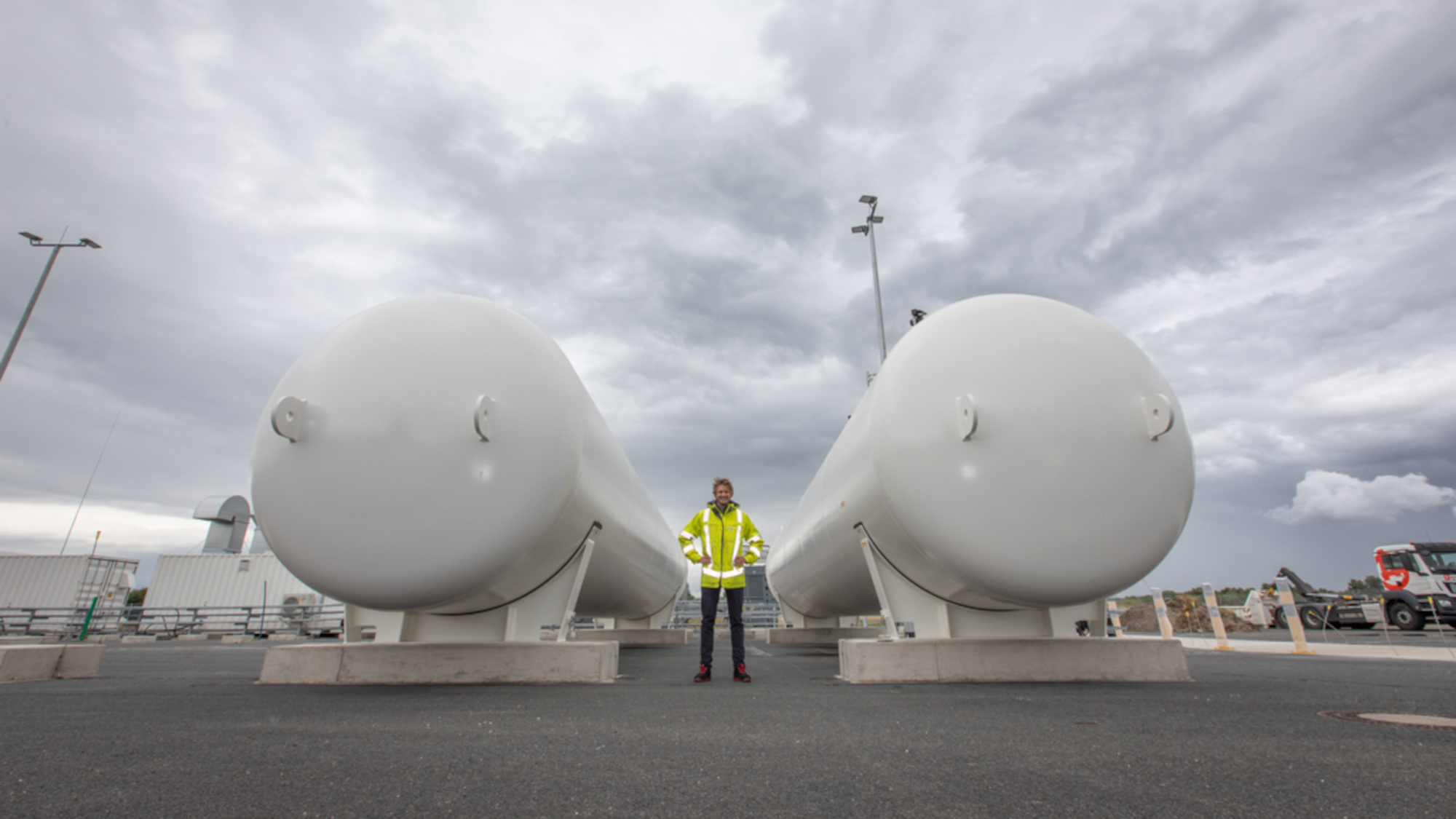
© Jens Lehmkühler
Hot Spot for Hydrogen Research
Grid stability is one of the major challenges of the energy transition.
In the Hydrogen Lab Bremerhaven (HLB), researchers from member institutions of the U Bremen Research Alliance are investigating ways to use hydrogen produced from wind energy to increase electrical supply security. This also benefits the local economy.
Inside the hangar, in which airplanes were once parked, technicians have set up an electricity distribution station. Outside on the apron, they created a fenced area the size of a soccer field and divided it into twelve test fields. There are two elongated hydrogen tanks and several shipping containers that hold technical equipment such as electrolyzers, fuel cells, and battery storage systems. Two combined heat and power plants, compressors, and a control room complete the view, with the blades of a wind turbine turning beyond the fenced area.
The Luneort Airport south of Bremerhaven closed in 2016 and was left to deteriorate, but its period of abandonment is now in the past. The Fraunhofer Institute for Wind Energy Systems IWES, one of the member institutions of the U Bremen Research Alliance, built the HLB here with the support of 16 million euros in funding from Bremen State and the EU. Directly next to it, a test stand for converters, which transform electrical energy between differing types of voltage or current, is being built. A few hundred meters further down the road, the IWES has a testing station for wind turbine rotor blades. “We provide a research infrastructure here that is quite unusual,” says Jannes Vervoort, electrical engineer and research assistant at HLB. “We consider wind energy and hydrogen simultaneously.”
“We consider wind energy and hydrogen simultaneously.”
The wind is usually blowing on the coast – sometimes too much, and this can lead to the many wind turbines producing more electricity than the grids can handle. In the rare event that there is too little wind, and the energy generation from the sun is also insufficient, perfect dark doldrums are created. Because the power generated by renewable energy fluctuates and is increasingly decentralized, there are high demands on the power grids. “Relieving the strain on the grids is crucial for the success of the energy transition,” Vervoort emphasizes.
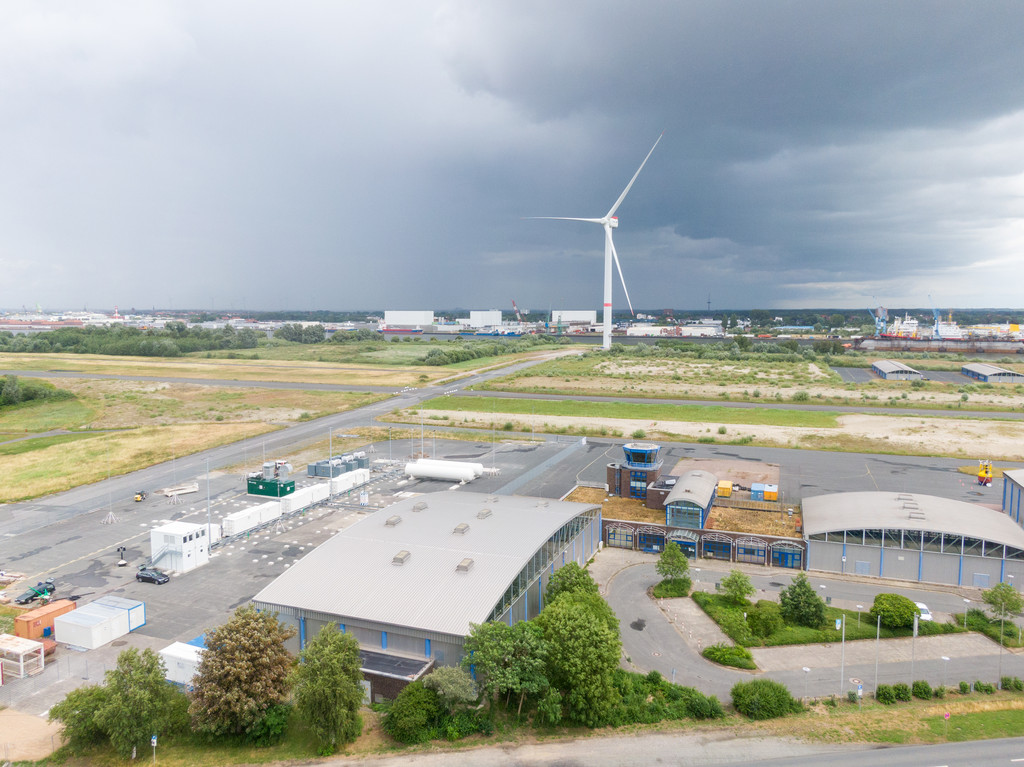
© Jens Lehmkühler
Green hydrogen will play a key role here. This energy is called green because it can store surplus electricity generated by wind energy in a climate-neutral way and thus smooth out peaks in demand by reconverting this into electricity. At least that is the goal. Before this can become reality, application-based research needs to answer many open questions. These include which considerations are to be made before an operator can connect powerful electrolyzers to a grid, or how the electronics of the material converters that use electricity to split water into its components (hydrogen and oxygen) need to be designed so that these can have a stabilizing effect on the grid. They also encompass the electrical characteristics at play in the interaction of the fluctuating electricity supply from wind energy with the electrolyzers.
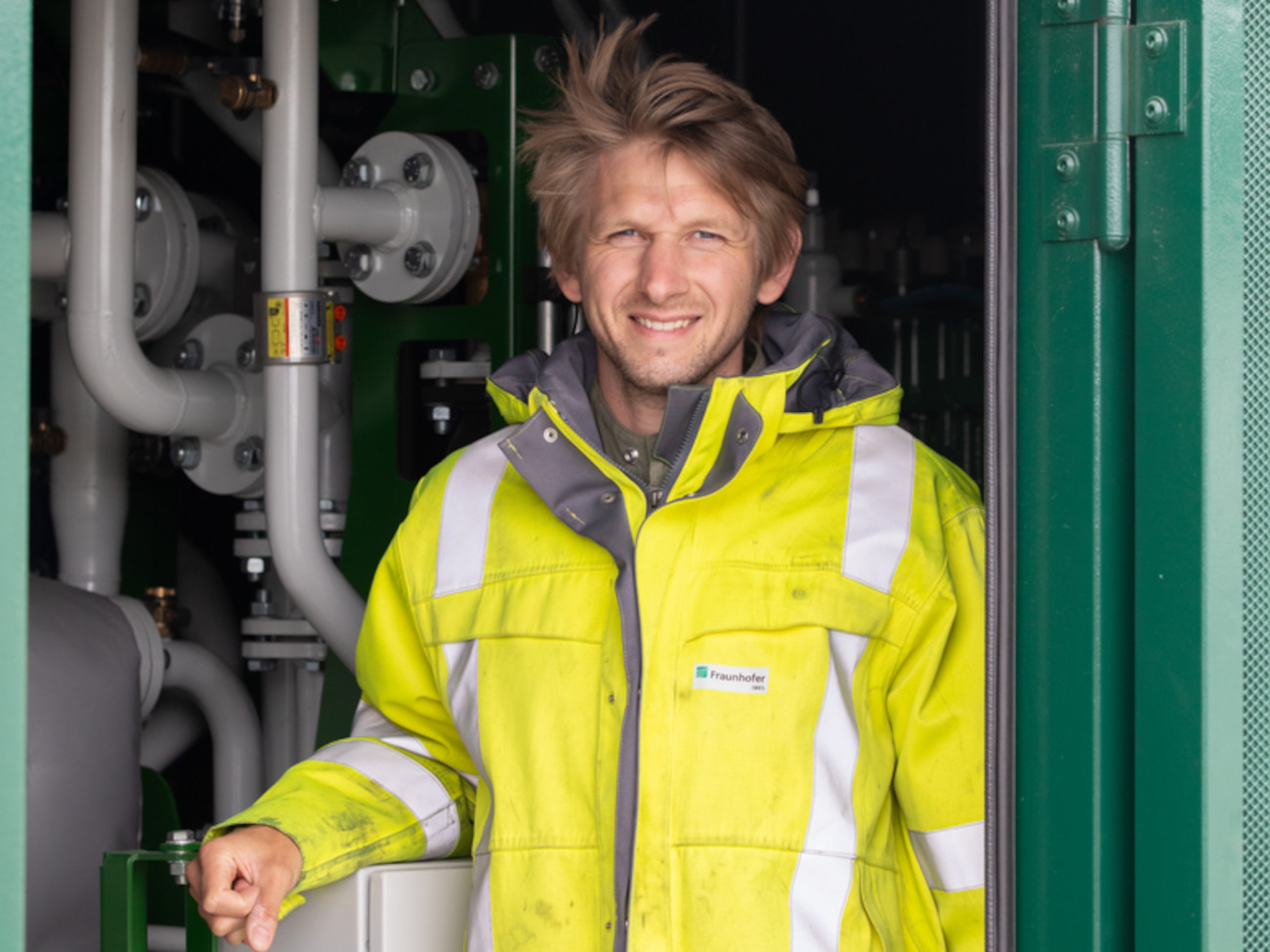
© Jens Lehmkühler
One of the research goals is to create standards and norms for future grid operation at the HLB. “We have established a testing infrastructure that is anything but common, even internationally, and are at the forefront of the development,” Vervoort says proudly. The researchers have set up their own electricity grid, which is primarily powered by wind energy. This power island is connected virtually to the medium-voltage grid of the Dynamic Nacelle Testing Laboratory (DyNaLab) at Fraunhofer IWES, the leading research institute for testing grid integration for wind turbines within Germany. “This allows us to simulate errors such as voltage dips and run load tests without practical effects on the electrical grid,” the 33-year-old explains.
“We have established a testing infrastructure that is anything but common, even internationally.”
Vervoort had already worked as a student employee at the Fraunhofer IWES when he completed his master’s degree in wind energy technology in Bremerhaven. “Renewable energy fascinated me, especially the large-scale sea turbines and the surrounding technology. Sustainability, as practiced at IWES, is also important to me,” he says. As a self-described “adventure engineer,” he also spent several years working offshore measuring load and performance before he began at HLB. “Research is amazing. There are always new challenges, and so much happens so fast.”
The HLB also researches seawater desalination and has a basin for this on site. Their goal is to generate hydrogen directly at the energy source in the open sea – to combine the offshore wind turbines with electrolyzers and use a pipeline to transport the hydrogen back to shore. The seawater would need to be desalinated before electrolysis, but this could be done with waste heat from the electrolyzer.
The Hydrogen Lab Bremerhaven consists of ten test fields. The research in these areas can be performed separately or collaboratively. The Fraunhofer IWES works closely with the Institute for Electrical Drives, Power Electronics, and Devices at the University of Bremen (IALB), which is also a member institution of the U Bremen Research Alliance. “We complement each other well,” says Vervoort. “Our expertise lies in the area of subcomponents such as semiconductors, while IWES focuses more on system components,” adds Johannes Adler, senior engineer at IALB.
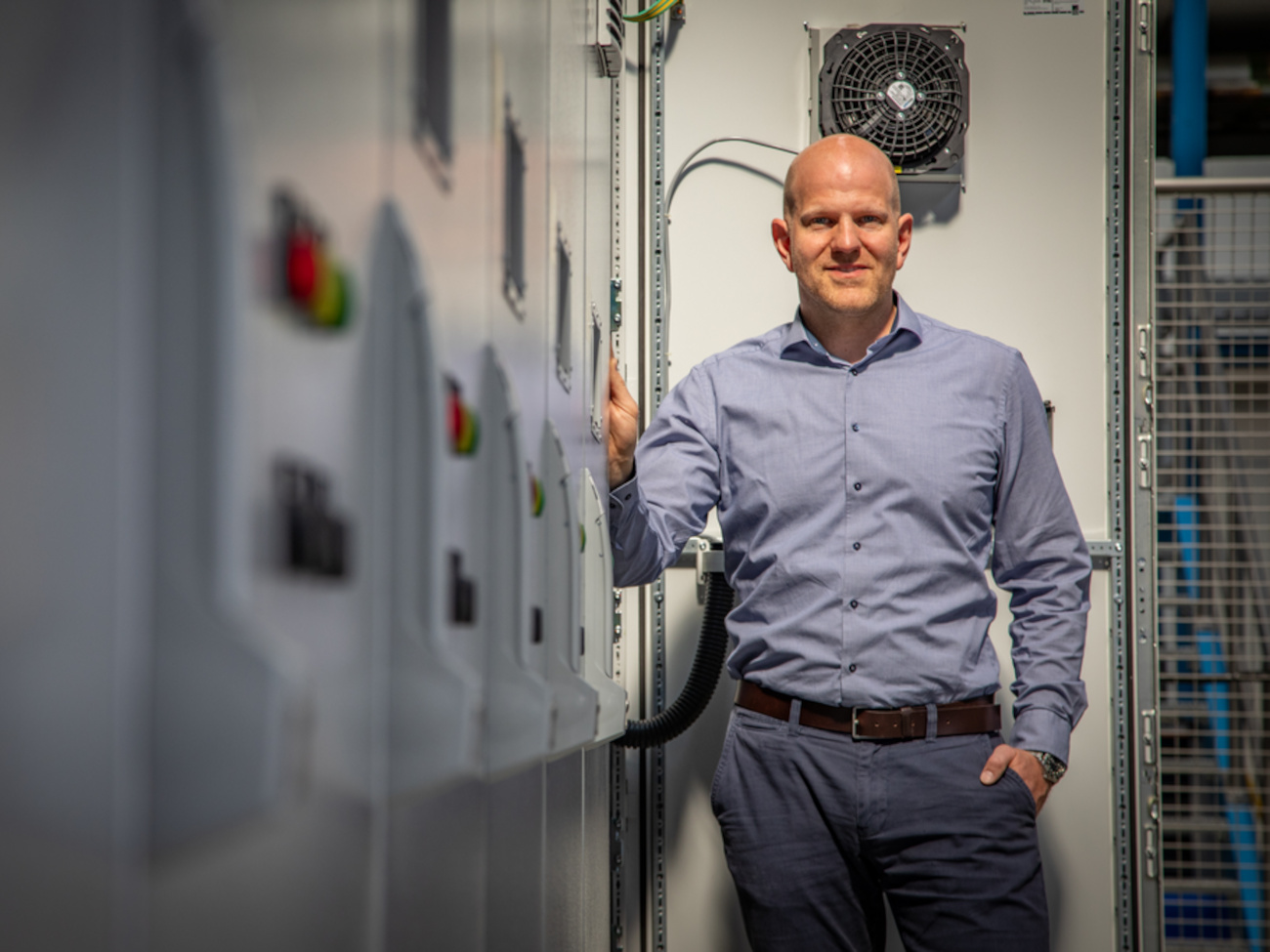
© Jens Lehmkühler
Funded with two million euros by the European Foundation for Regional Development, the IALB is developing a test plant to reconvert the green hydrogen the HLB produces. This consists of a combined heat and power plant with a battery storage unit that work well together: The combined heat and power plant constantly supplies power, and the battery storage unit has the task of dynamically reacting to fluctuating grid demands and absorbing short-term peaks.
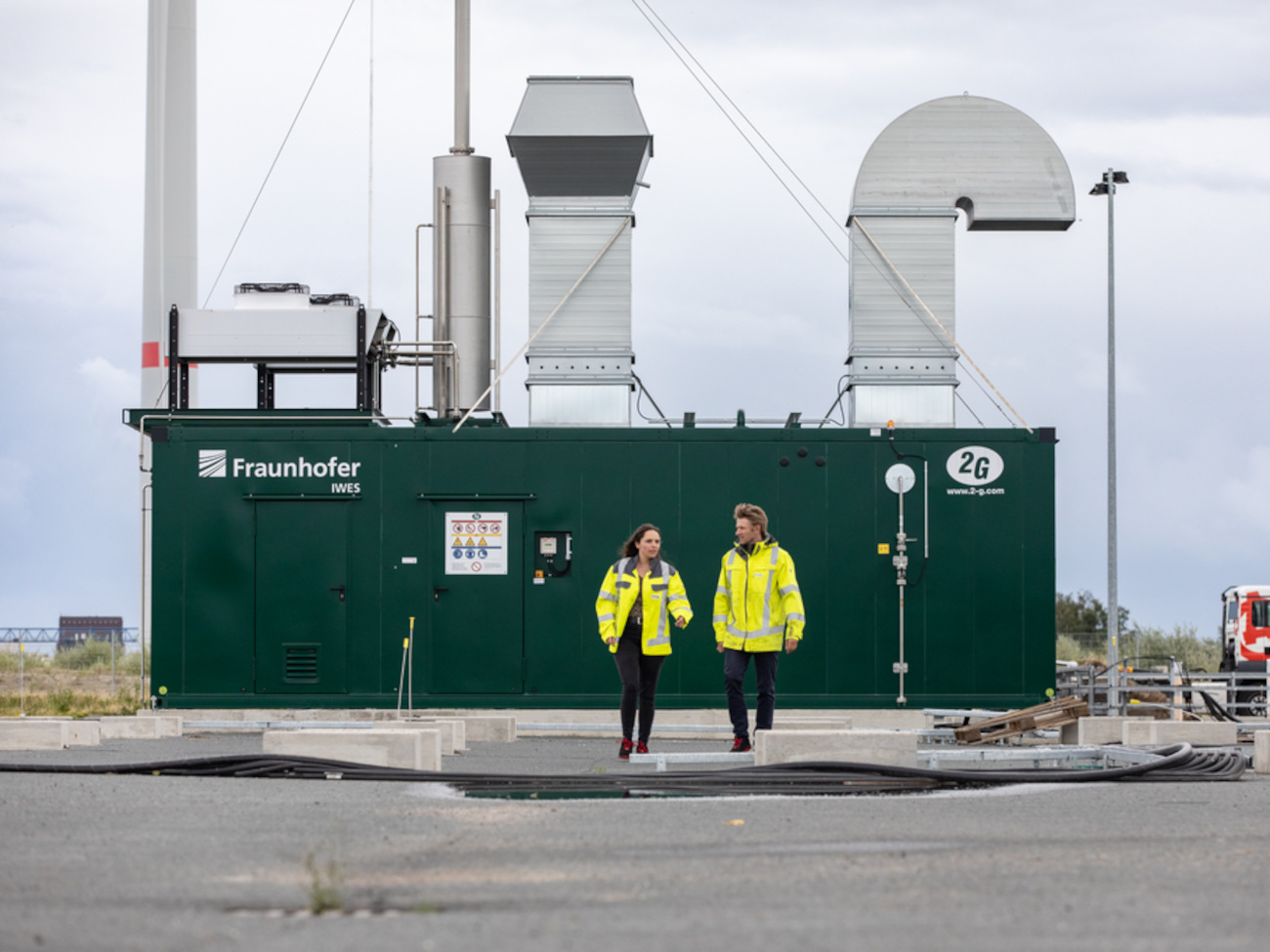
© Jens Lehmkühler
“The electrical grid needs to produce exactly as much energy as is needed at any given point in time,” Adler explains. Up to now, conventional power plants have provided this service. In the grids of the future, many small renewable generators, such as hydrogen-powered combined heat and power plants, will have to perform this task with the help of battery storage units. “The goal of the reconversion plant is to look at how each of these operate independently and merge the two technologies,” says Adler. This parallel operation is also important in developing island grids, for example in mountainous regions, on islands, or in remote areas that are not connected to other grids.
“With offshore wind energy at its doorstep and the research center on land, Bremerhaven is set to become a center of excellence for hydrogen power.”
Although the Hydrogen Lab Bremerhaven is an electrical island, it is not isolated. It is integrated within the local economy and the research is intended to contribute to the development of a sustainable hydrogen economy in Bremerhaven. Almost one ton of green hydrogen is produced each day during the experiments. This colorless and odorless gas is stored in pressurized tanks and can be directed into the gas supply. Possible applications range from producing synthetic fuels for vehicles to replacing gas with methane heating in buildings or replacing the industrial use of fossil fuels.
One goal of the Technology Transfer Center (ttz) Bremerhaven is to research how hydrogen can be used instead of gas for baking bread and rolls, for example. They are working to develop and construct a hydrogen oven and are also exploring possible applications for hydrogen-powered vehicles in logistics. The goal is to use hydrogen to power buses and ships.
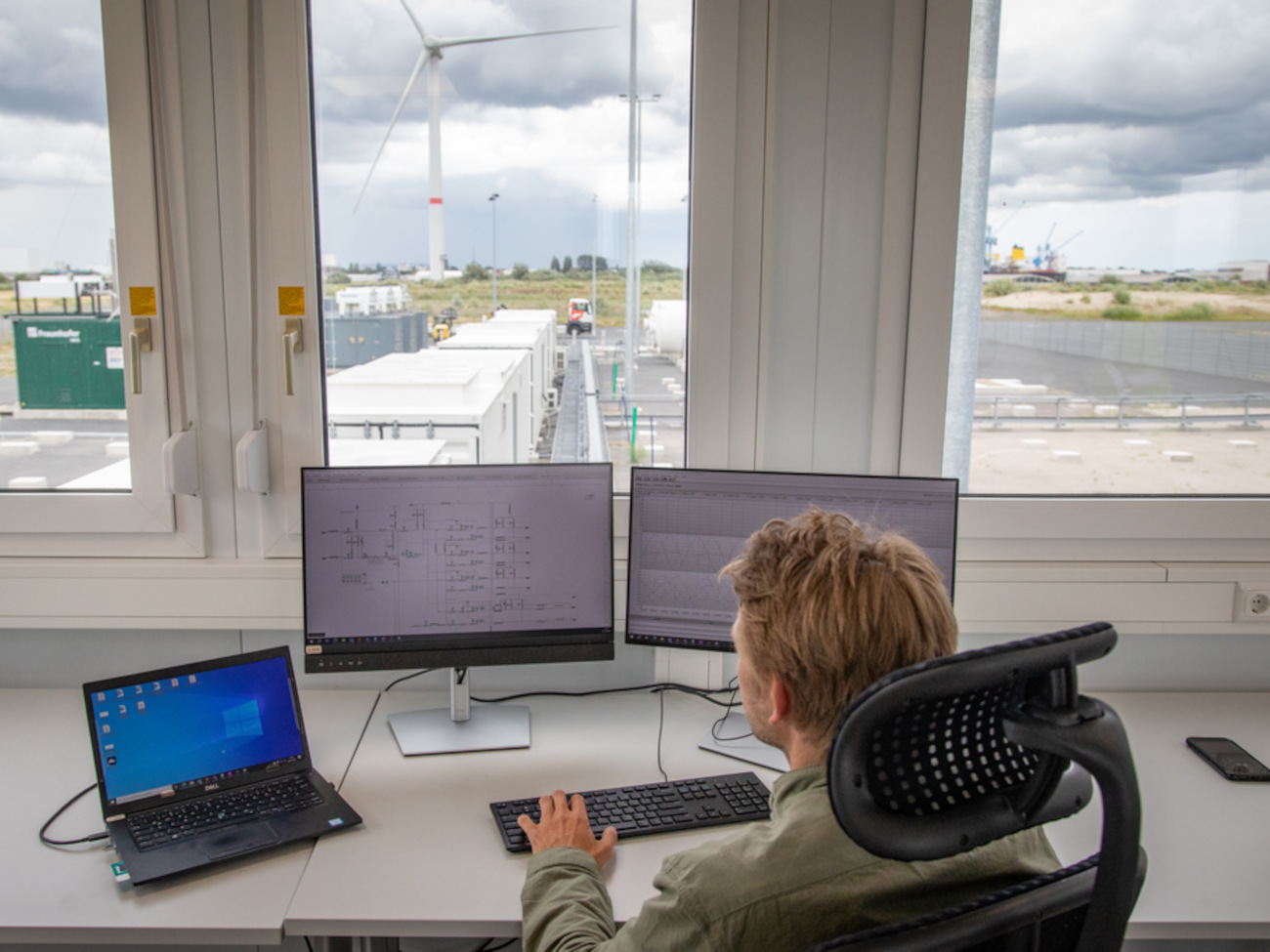
© Jens Lehmkühler
With offshore wind energy at its doorstep and the research center on land, Bremerhaven is set to become a center of excellence for hydrogen power, and further projects are planned. The dynamics of hydrogen research will become more apparent at Bremerhaven-Luneort Airport. The deserted arrival terminal is set to be converted into offices.
CO2-Neutral Northern Germany
The energy transition is one of the most important issues of our time. The University of Bremen has founded the “Bremen Research Center for Energy Systems (BEST)” to develop solutions in this area. With the motto “Energy for Economy and Society,” a new academic area of focus is being established with a clear vision: to help shape Northern Germany to be CO2-neutral. Funded by Bremen State, the network brings together expertise from the University of Bremen, several member institutions of the U Bremen Research Alliance, and other universities, and works closely with industrial partners. BEST pursues an interdisciplinary approach to seek answers to complex questions concerning sustainability, supply security, social acceptance, and competitiveness. The network’s spokesperson is Professor Johanna Myrzik, head of the Institute of Automation Technology at the University of Bremen.
The article comes from Impact – the U Bremen Research Alliance scientific magazine
The U Bremen Research Alliance is a collaborative organization made up of the University of Bremen and twelve state-funded, nonuniversity research institutes. The cooperation spans four high-profile areas and thus covers everything “from deep sea to outer space.” Twice a year, the scientific magazine Impact provides exciting insights into the results of the collaborative research in Bremen.